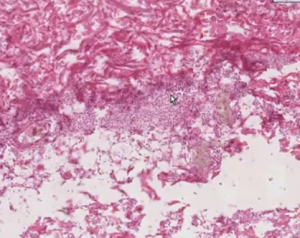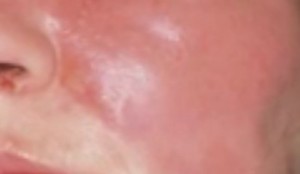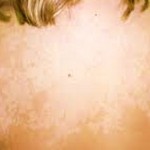Erysipelas is a type of acute infection which affects the superficial lymphatic structures and the outer dermis. It is caused by streptococcus bacterium, and is known by different names in different places, such as ‘Ignis sacer’, ‘holy fire’ and ‘St. Anthony’s fire.’
Symptoms of erysipelas
The following are some of the signs and symptoms of erysipelas:
• Some of the specific symptoms of erysipelasexperienced by the patient within 48 hoursfrom infectioninclude fever with high temperature, chills, shaking, fatigue, tremors, headaches, malaise, vomiting,and anoverall feeling of weakness and sickness.
• The erysipelas rash may cause severe pain
• In appearance, it may look like an orange skin along with a hardened, swollen, and reddish rash.Acase of severe rash may result in blisters, petechiae, and vesicles. In certain circumstances there may also be decay/death of the skin cells, or skin necrosis.
• There may be swelling of the lymph nodes as well as development of lymphedema. In some cases, reddish streaks can also be noticed extending to the lymph node.
• The erysipelas infection can affect any portion of the skin such as legs, fingers, arms, toes,and face. It mostly affects the extremities. Different parts of the face such as around the ear, eyes, cheeks, and fatty tissues are at greater risk of infection.
• Erysipelas erythematous skin lesion spreadsquickly and easily identified by the raised demarcated border.
• A repeated chronic severe infection may lead to lymphadenitis and continuous swelling.
The following are some of the complications of erysipelas:
• Even after antibiotic medication, 18 to 30% of erysipelas cases of bacterial infection get recurrence.
• The erysipelas infection can spread to other vulnerable parts of the body through the blood stream, and result in septic arthritis, or infective endocarditis which affects the cardiac valves.
• Necrotizing fasciitis is a strong aggravation of bacterial infection which penetrate into deeper tissues. This type of erysipelas condition is generally called as ‘flesh eating bug.’
• Septic shock is a condition that can be fatal
• Damage to the lymphatic system.
Causes of erysipelas
• Erysipelas generally tends to affect the younger kids, infants, and the elderly.
• Weak immune system, diabetes, alcoholism, skin ulcer, compromised lymphatic drainage, fungal infection increases the possibilities of erysipelas infection
• Streptococcus pyogenes bacteria, which is also called as beta-hemolytic group A streptococci causes the majority cases of Erysipelas infections.
• Erysipelas rash is caused, not only by the Streptococcus bacterium, but also by exotoxin. Generally it is prevalent on areas of the body where no symptoms are available to be seen.Forexample, it can be seen that an infection may happen innaso-pharynx, but the rashes may occur on arms and face.
• It is also possible that the erysipelasinfection can be caused by non-group A streptococci which includes the beta-hemolytic, Streptococcus agalactiae,which is a group B strep.
• The most commonly erysipelas affected part is the face. However, it is usually widespread on the legs
• The unique feature of erysipelas is that it does not affect the subcutaneous tissues and does it ooze out pus.Instead, it oozes serous liquid or serum. Subcutaneous edema may misguide the doctor to incorrectly diagnose the prevailing condition as cellulitis. It may however be noted that the erysipelas rash has a sharper border and is more inhibitedas opposed to cellulitis rashes.
• Erysipelas infections enter the skin through ulcers, surgical incisions, insect bites, eczema, cuts, injuries, and dog bites, etc. However most cases of strep bacterial infection occur in nasal passages of patients.
• Any abrasion or scratch which causes erysipelas infection may trigger the onset of toxemia.
Diagnosis of erysipelas
• The prime indicator for diagnosing erysipelas is inflammation and it’s well defined formand shape
• Even though a blood culture is not dependable, it can be useful to check the existence of sepsis. But it is essential to differentiation of the condition from other conditions such as herpes zoster, carcinoma of breast, contact dermatitis, and angioedema. The elevation, sharp edges, and the advanced margins identify erysipelas from other conditions.
• After a period of ten days, doctors will also notice an elevation in antistreptolysin O titer or ASO
Treatment of erysipelas
• Within a day or two, the sickness symptoms may be removed, but the recovery of skin disorder may take few weeks for a complete recovery.
• After initial treatment for erysipelas, prophylactic antibiotics are given to prevent and control the recurrence of the infection.
• Oral or intravenous antibiotics such as erythromycin, penicillin, clindamycin are administered to treat erysipelas infection, according to the severity of the condition.
• For treating erysipelas, the bark of magnolia can also be used in the topical form. It has to be collected in spring and/or n summer. The topical medication can be prepared by mild boiling of a tablespoon of magnolia bark for about ten minutes in a prescribed quantity of water. You may then apply the solution on the affected portions of the skin to treat erysipelas.
Erysipelas pictures


